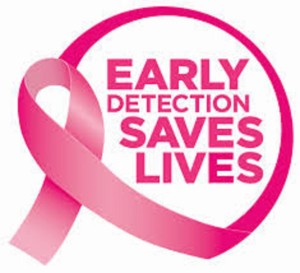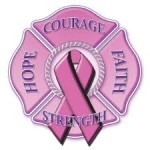October is Breast Cancer Awareness Month.
In the U.S., breast cancer is the second most common cancer in women after skin cancer and while most people are aware of breast cancer, many forget to take the steps to detect the disease in its early stages. This annual international health campaign is designed to increase awareness and raise funds for research. It also reminds women to be “breast cancer aware” for early detection.
National Breast Cancer Awareness Month was founded in 1985 and is closely associated with Race for the Cure. The first Race for the Cure was held in 1983 and in the fall of 1991, pink ribbons were handed out to participants in the New York City race for breast cancer survivors.
There is no sure way to prevent breast cancer, but most doctors feel that early detection tests save thousands of lives each year. Here’s what we can do:
- Practice breast self-exam (BSE) monthly and report any breast changes to a health professional right away.
- Women age 40 and older should have a mammogram every year and should continue to do so for as long as you are in good health.
- Women in their 20s and 30s should have a clinical breast exam (CBE) as part of a regular health exam by a health professional, preferably every 3 years.
- Body weight, physical activity, and diet have all been linked to breast cancer, so these might be areas where you can take action.
- MRI and mammogram exams of the breast are recommended for women at high risk of breast cancer.
- Consider genetic testing for the BRCA genes, if you have a strong family history of breast cancer.
Being diagnosed with breast cancer is a life-changing experience. It can be hard to handle the news at first, and even harder to know how to proceed. While everyone’s journey is unique, knowing that others before you have been through something similar can give you the strength and inspiration you need to keep everything in perspective.
Found value? Feel free to share!!
To Your Success,
Althea
Althea A. McLeish Wilson, RN, MSN
Educate . Empower . Encourage


